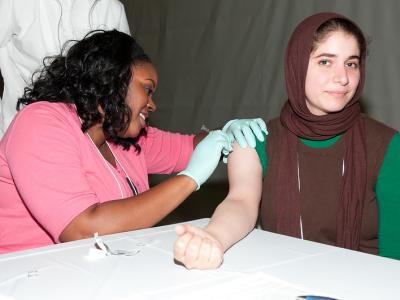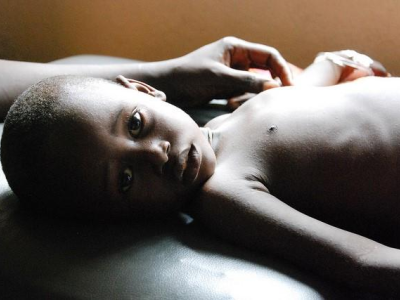Our weekly wrap-up of antimicrobial stewardship & antimicrobial resistance scans
Rise of carbapenemase-producing enterobacteriaceae reported in Belgium
Belgian researchers are reporting a rise in carbapenemase-producing enterobacteriaceae (CPE), including a colistin-resistant MCR-1 producer, in hospitals and the community in Belgium.
In a surveillance and outbreak report published yesterday in Eurosurveillance, the researchers report on a survey of non-duplicated enterobacteriaceae isolates from clinical specimens collected at 24 hospital-based and 10 private laboratories from September to November 2015. All isolates were tested locally for susceptibility to the carbapenem antibiotics meropenem and ertapenem, and those showing decreased susceptibility were tested for carbapenemase production.
In total, 4,705 and 1,991 enterobacteriaceae isolates were tested by the hospital-based and private labs, respectively. The results showed the minimal estimated proportion of CPE was 0.55% (26 of 4,705) among clinical isolates from hospitalized patients, which represents a doubling of the proportion (0.25%) found in a similar survey conducted in Belgian hospitals in 2012. The minimal estimated proportion of CPE among isolates from ambulatory patients was 0.60% (12 of 1,991). This is the first documentation of CPE in an ambulatory setting in Belgium, the authors note.
Of the 38 CPE isolates detected, 86% (26 of 38) were Klebsiella pneumoniae, and 74% (28 of 38) were found to carry the OXA-48 carbapenemase gene. Other organisms included Escherichia coli, Klebsiella oxytoca, Citrobacter freundii, and Citrobacter koseri. Other carbapenemase genes detected included NDM-1, KPC-2, KPC-3, and NDM-5. Of the 7 CPE isolates that were resistant to the last-resort antibiotic colistin, one was found to carry the plasmid-mediated MCR-1 gene
"Although the proportion of CPE remained globally low, the steady progression and spread of CPE in Belgian hospitals and the emergence of colistin-resistant (including plasmid-mediated mcr-1 harbouring) strains among CPE raises major concerns," the authors write.
May 11 Eurosurveill report
Novel antifungal drug shows early promise against Candida auris
Originally published by CIDRAP News May 11
A novel antifungal drug has shown in vitro activity against the emerging fungal pathogen Candida auris, researchers report in Antimicrobial Agents and Chemotherapy.
In lab experiments, investigators from the Mycotic Diseases Branch of the Centers for Disease Control and Prevention (CDC) and biotechnology company SCYNEXIS evaluated the in vitro susceptibility of SCY-078, a triterpine glucan synthase inhibitor that has shown activity against other Candida species, against a collection of 100 isolates of C auris. The collection of isolates came from all over the world, represented the four known clades of C auris, and included isolates known to have elevated minimum inhibitory concentrations against echinocandins—a class of glucan synthase inhibitors used to treat Candida and other fungal infections.
The investigators report that SCY-078 showed potent activity against all the clades of C auris, with little variation in activity, and also retained its activity against the isolates that were resistant to echinocandins.
C auris was originally discovered in 2009 in Japan and since then has emerged as a global health threat due to its growing resistance to all three major classes of antifungals used in Candidainfections. The CDC estimates the mortality from drug-resistant yeast, which can cause bloodstream, wound, and ear infections, at approximately 60%. More than 60 C auris cases have been reported in the United States.
"These initial results are extremely encouraging and highlight the potential of SCY-078 to address this growing public health crisis," David Angulo, MD, study co-author and chief medical officer at SCYNEXIS, said in a company press release. "We look forward to continuing to accelerate the development of this promising therapy."
May 8 Antimicrob Agents Chemother abstract
May 11 SCYNEXIS press release
Researchers uncover prehistoric origins of enterococci
Originally published by CIDRAP News May 11
A study today in the journal Cell suggests that enterococci, the bacterial organisms that live in the human and animal gut and have become a significant source of drug-resistant hospital infections, emerged more than 400 million years ago, and that their exposure to environmental stresses enabled them to build up defenses against antibiotics.
In the study, researchers from Harvard Medical School, Massachusetts Eye and Ear, and the Broad Institute selected 24 enterococcal species representing all major phylogenetic branches and sequenced their genomes in an attempt to understand how these organisms adapted to the modern hospital environment. Then, using molecular clock estimation, along with analysis of their environmental distribution, phenotypic diversity, and concordance with host fossil records, they were able to determine that these organisms emerged around 425 million years ago, right around the same time as land animals. And as new species of animals emerged, so did new species of enterococci.
As animals crawled onto land, they carried enterococci with them in their intestines, and when the microbes were excreted, they were exposed to cycles of isolation, starvation, and desiccation until they re-entered the food chain. Over millions of years of exposure to these environmental stresses, the researchers argue, enterococci developed hardened cell walls and acquired genes that made them resistant to drying out—the same traits that today make them resistant to many antibiotics and hospital disinfectants.
As a result, the authors of the study write, "The emergence of enterococci as leading hospital pathogens appears to have been foreordained by events of at least 425 million years ago."
The authors say discovering that the environment in which microbes live leads to new properties could enable scientists to predict how microbes will adapt to the products intended to control their spread, and inform efforts to develop new solutions to drug resistance.
May 11 Cell abstract
May 11 Massachusetts Eye and Ear Infirmary news release
CDC notes rise of pneumococcal strain not susceptible to penicillin
Originally published by CIDRAP News May 11
Experts from the US Centers for Disease Control and Prevention yesterday noted the concerning recent rise of a pneumococcal serotype not susceptible to penicillin that they say should be considered for inclusion in any vaccine that would replace the current 13-strain pneumococcal conjugate vaccine (PCV13).
Writing in Emerging Infectious Diseases, the investigators detailed their analysis of 199 nonvaccine serotype 35B pneumococcal strains isolated from patients in 2015 and 2016. The incidence of this strain increased from 1.2 to 1.3 cases per million population in 1998 and 1999 to 2.1 to 3.7 cases per million in the post–pneumococcal 7-valent conjugate vaccine (PCV7) years (2001-2009). It then jumped again post-PCV13, to 3.3 to 4.8 cases per million. PCV13 was introduced in 2010.
In addition, "penicillin-nonsusceptible" strains of 35B increased in the post-PCV7 years and increased even more post-PCV13. This shift was propelled primarily by a 35B lineage called ST558. This 35B/ST558 strain then combined genes with a serotype 9V/ST156 strain in 2015 and 2016, spawning new 35B/ST156 progeny in at least six states.
The authors conclude, "Spread of 35B/ST156 is of concern in view of past global predominance of pathogenic ST156 vaccine serotype strains. Protection against serotype 35B should be considered in next-generation pneumococcal vaccines."
May 10 Emerg Infect Dis report
Study finds race, male sex associated with MRSA bacteremia
Originally published by CIDRAP News May 10
A multicenter study of patients with MRSA bloodstream infections caused by a community-associated strain of the pathogen has identified race as a primary association, researchers reported yesterday in the Journal of Infectious Diseases.
For the study, researchers retrospectively evaluated hospital-onset methicillin-resistant Staphylococcus aureus (HO-MRSA) and hospital-onset methicillin-susceptible S aureus (HO-MSSA) bloodstream infections diagnosed at a large public hospital and a large academic medical center in Chicago. The objective was to determine whether sex and racial disparities exist for S aureusbacteremia and to use whole-genome sequencing (WGS) to characterize transmission pathways associated with USA300, a common community-associated MRSA strain.
The researchers identified 156 HO-MRSA and 256 HO-MSSA bloodstream infections at the two hospitals from 2009 through 2013, and multivariate analysis showed that male sex, African-American race, and non-Hispanic white race/ethnicity were significantly associated with HO-MRSA bacteremia, while Hispanic ethnicity was negatively associated. Analysis of WGS data from a sample of the USA300 MRSA bacteremia isolates further revealed that African-American race was the only factor associated with phylogenic clustering of patient isolates, and that there is an intermixing of USA300 transmission networks between the community and the hospital.
The authors say the findings suggest that MRSA bloodstream infections caused by USA300 are likely due to colonizing strains acquired in the community before infection. "Future infection prevention interventions for USA300 MRSA may need to extend to the community for maximal benefit," they write.
May 9 J Infect Dis study
Study: 46% of elderly patients got unnecessary antibiotics for URIs
Originally published by CIDRAP News May 9
A large new study out of Canada has found nearly half of elderly patients with nonbacterial acute upper respiratory infections (AURI) were prescribed antibiotics, despite guidelines that discourage the practice.
The study, published today in the Annals of Internal Medicine, was a retrospective analysis of patients 66 or older who presented with nonbacterial AURI from Jan 1 through Dec 31, 2012. While the primary outcome was the proportion of patients who received an antibiotic prescription within 30 days of their initial primary care visit, the investigators also analyzed characteristics of the patients and the primary care physicians who treated them. They used a multivariable logistics regression model to determine the relationship between those characteristics and antibiotic prescribing rates.
Overall, the investigators identified 185,014 patients aged 66 years or older who were managed by 8,990 unique physicians. The most commonly coded infections were the common cold (53.4%), acute bronchitis (31.1%), acute sinusitis (13.6%), and acute laryngitis (1.6%). Antibiotics were prescribed to 46.2% of patients, and patients who received an antibiotic were more likely than those who did not to have acute bronchitis (45.3% vs. 19.3%) or acute sinusitis (17.1% vs. 10.6%) and have received antibiotics in the previous year (34.2% vs. 27.7%).
The regression analysis showed that patients were more likely to receive antibiotics from mid- and late-career physicians (prescribing rates of 43.5% and 43%, respectively) than from early-career physicians (38.4%); from physicians trained internationally (45.2%) than from those trained in Canada and the United States (41.6%); and from physicians who saw 25-44 or more than 45 patients per day than those who saw fewer than 25 patients a day (43.3% and 44.4% vs. 40.3%). These results remained significant when only the common cold and laryngitis were examined.
The investigators also found that most prescriptions were for broad-spectrum agents, including macrolides, cephalosporins, and fluoroquinolones, despite the fact that broad-spectrum antibiotics are not recommended as initial therapy for any of the conditions studied.
"Our findings should be considered when planning interventions to reduce inappropriate prescribing," the authors of the study write. "Because clinical guidelines and other approaches to behavioral change do not appear to have had the desired effect on practice, further research on alternative strategies to deter inappropriate antibiotic prescribing is needed."
May 9 Ann Intern Med study
Special issue focuses on resistance, stewardship in Asia Pacific
Originally published by CIDRAP News May 8
The latest issue of Clinical Infectious Diseases includes a supplement on infection prevention and control in the Asia-Pacific region, with a focus on antimicrobial resistance and stewardship.
As a geographic source for emerging infectious diseases, the Asia-Pacific region has become a significant area of concern for global health officials. With high rates of healthcare-associated infections and widespread availability of antimicrobial agents, the steady emergence of multidrug-resistant organisms (MDROs) in Asia-Pacific healthcare settings, and how to slow that emergence, is a particular concern.
The supplement focuses on three key themes of infection prevention and control in healthcare settings across the Asia-Pacific region: (1) epidemiology and evidence to support prevention and control interventions, (2) enhancements to infection prevention and control in healthcare settings, and (3) practices associated with the containment of emerging infectious diseases and outbreaks.
Epidemiologic data and evidence to support prevention and control interventions is covered in two national surveys of best practices and four epidemiology studies, including two studies that look at carbapenem-resistant enterobacteriaceae and MRSA in Singapore. Assessments of efforts to enhance infection prevention and control include a review of antimicrobial stewardship programs in inpatient settings in the region, as well as studies on the innovative use of electronic medical records and molecular diagnostics to identify patients with bacterial infections.
The supplement also includes studies on two outbreaks of bacterial pathogens—a large foodborne outbreak of Streptococcus agalactiae infection in Singapore and a pseudo-outbreak of Bacillusbacteremia in Hong Kong linked to contaminated bed linens.
"The publications in this issue support future work focused on continued generation of evidence and dissemination of data, ongoing microbial surveillance, and implementation, if not adoption, of effective prevention strategies to contain the spread of MDROs and key emerging infectious diseases in the region," the authors of a supplement overview write.
May 2017 Clin Infect Dis supplement













